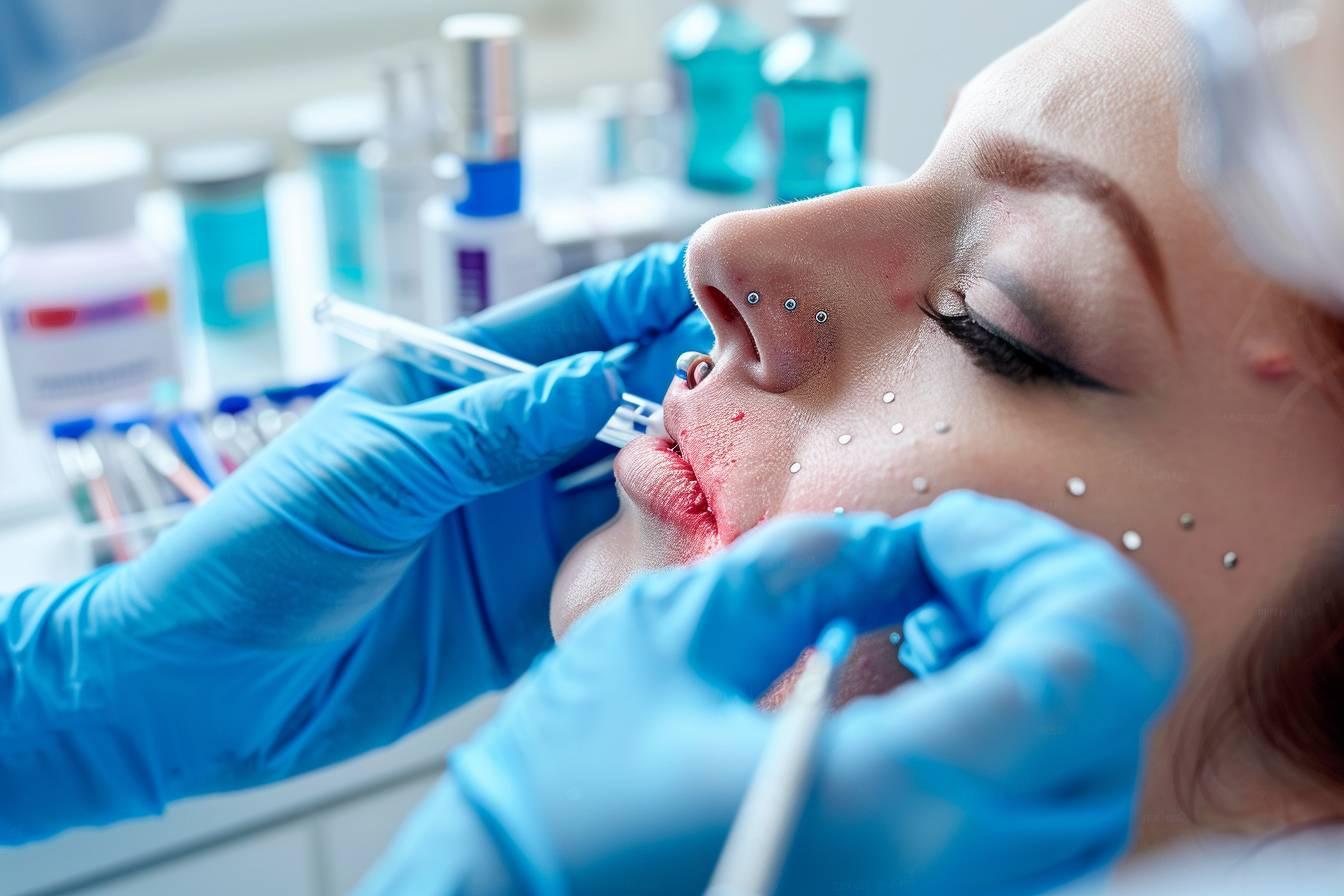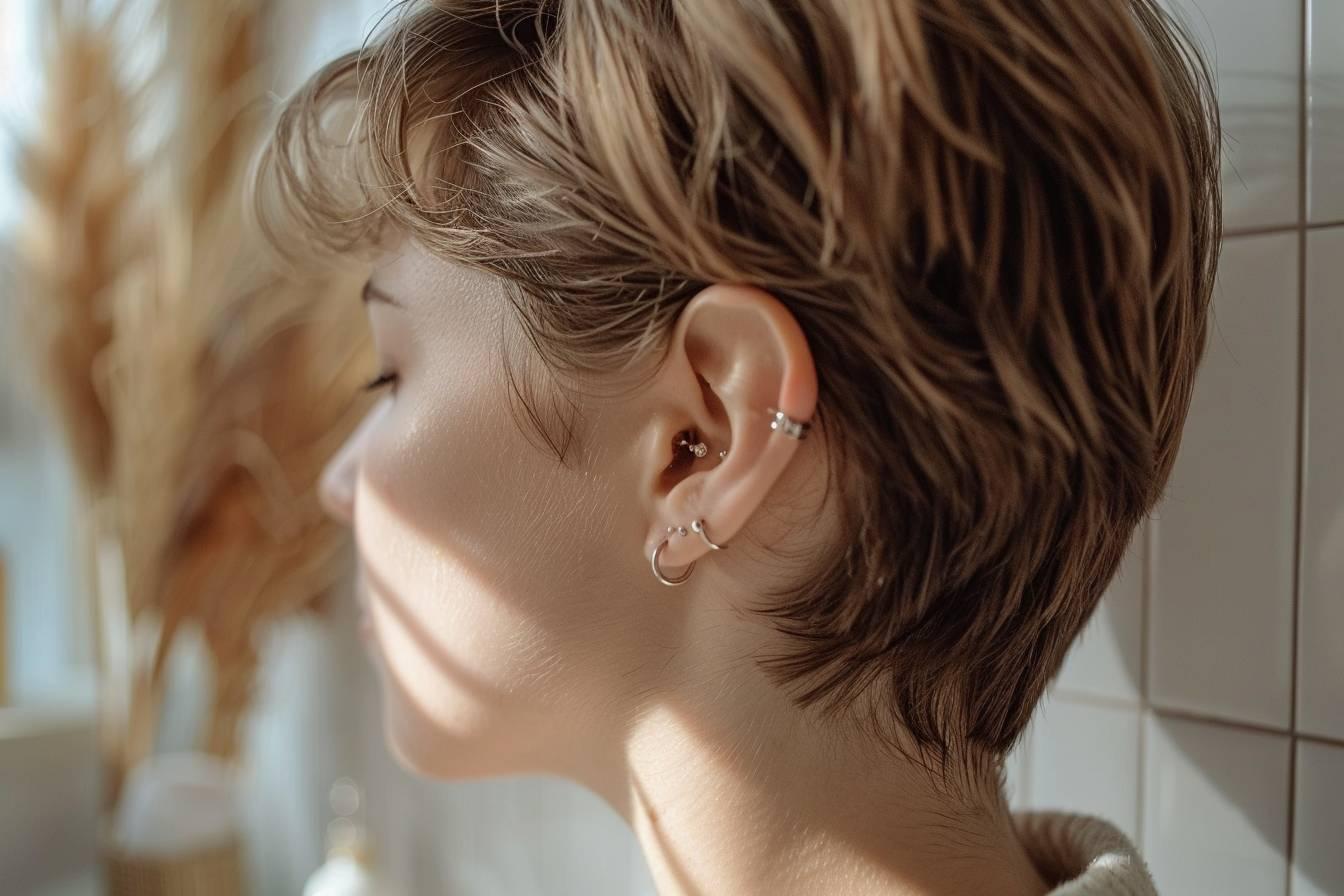Tragus piercings, a trend that combines elegance and originality, are winning over more and more body jewelry enthusiasts. Located on the small cartilaginous area in front of the entrance to the ear canal, this piercing offers a multitude of possibilities for expressing one’s personality. Let’s discover the essential aspects of this captivating piece of ear jewelry.
Choosing your tragus piercing: styles and considerations
Choosing a tragus piercing is a personal decision that deserves careful consideration. The diversity of jewelry available means that everyone can find the style that suits them. From discreet studs to bolder rings and ornate bars, the options are numerous.
Here are some popular tragus piercing styles:
- Simple titanium nail
- Ring set with precious stones
- Straight bar with geometric motifs
- Gold jewel with solitaire diamond
When selecting your jewelry, consider not only aesthetics, but also comfort and compatibility with your lifestyle. For example, if you frequently use headphones, a discreet stud might be more suitable than a bulky ring.
It’s vital to note that the material of the jewelry plays a crucial role in the success of your piercing. Surgical steel, titanium and gold are recommended for their biocompatibility and corrosion resistance. Avoid inexpensive materials that may cause allergic reactions or slow healing.
For those who like to vary the pleasures, it’s possible to coordinate your tragus piercing with other jewelry. Discover our exclusive collection of rings to create a harmonious ensemble that will enhance your personal style.
Tragus piercing: procedure and precautions
Tragus piercing requires the intervention of a qualified professional. The procedure, though rapid, requires precision and rigor. Here are the main steps in performing a tragus piercing:
- Cleaning and disinfecting the area to be pierced
- Marking the piercing point
- Use of a sterile needle to create the hole
- Inserting the chosen jewel
- Post-piercing advice and care instructions
It’s vital to choose an experienced piercer and to ensure that the salon complies with the strictest hygiene standards. Don’t hesitate to ask questions about equipment sterilization and the products used.
The pain associated with a tragus piercing is generally described as moderate, comparable to a sharp pinch. However, the sensation can vary from person to person. Some feel pressure rather than sharp pain.
After the piercing, slight redness and swelling are normal. These symptoms should subside in the following days. If you notice any signs of infection, such as intense pain, purulent discharge or fever, consult a health professional immediately.

Maintenance and care for a healthy tragus piercing
Proper care of your tragus piercing is essential to prevent infection and ensure optimal healing. The healing period can last from 3 to 6 months, during which time special attention must be paid to daily care.
Here’s a summary of the care required:
| Frequency | Action | Recommended product |
|---|---|---|
| 2 times a day | Cleansing | Saline solution |
| 1 time per day | Disinfection | Alcohol-free antiseptic solution |
| After each shower | Drying | Sterile compress |
Avoid touching your piercing with dirty hands, and resist the temptation to rotate it, which could introduce bacteria and irritate the wound. While showering, be sure to rinse the area gently without using soap directly on the piercing.
It’s advisable to sleep on the side opposite the piercing to avoid any unnecessary pressure. If you use a telephone, take care not to press the device against your freshly-made piercing.
Once the healing period is over, you can change your jewelry. However, to avoid any risk of injury or infection, it’s best to have this initial operation carried out by a professional.
Myths and facts about tragus piercings
There are many myths about tragus piercings. Distinguishing fact from fiction is vital to making an informed decision. Let’s take a look at some of the most common myths:
Myth 1: Tragus piercings affect hearing
Reality: A correctly performed tragus piercing has no impact on hearing. The tragus does not play a significant role in the hearing process.
Myth 2: Scarring is extremely painful
Reality: Although the area can be sensitive for the first few days, most people describe the pain as manageable and temporary.
Myth 3: You can’t use headphones after a tragus piercing
Reality: After the healing period, it’s perfectly possible to use headphones. During the healing period, over-the-ear headphones can be a comfortable alternative.
It’s worth noting that tragus piercings have a rich history. In some ancient cultures, this type of piercing was associated with therapeutic benefits, notably to relieve migraines. Although these beliefs are not scientifically proven, they testify to the cultural importance of body modifications throughout the ages.
Today, celebrities such as Rihanna and Scarlett Johansson have helped to popularize tragus piercings, propelling them to the status of a veritable fashion statement. Nevertheless, it’s important to remember that the choice of a piercing should above all be personal and not dictated by current trends.
Ultimately, a tragus piercing offers a unique way to express creativity and individuality. With the right care and quality jewelry, it can become a distinctive element of your personal style, adding a touch of originality to your overall appearance.

